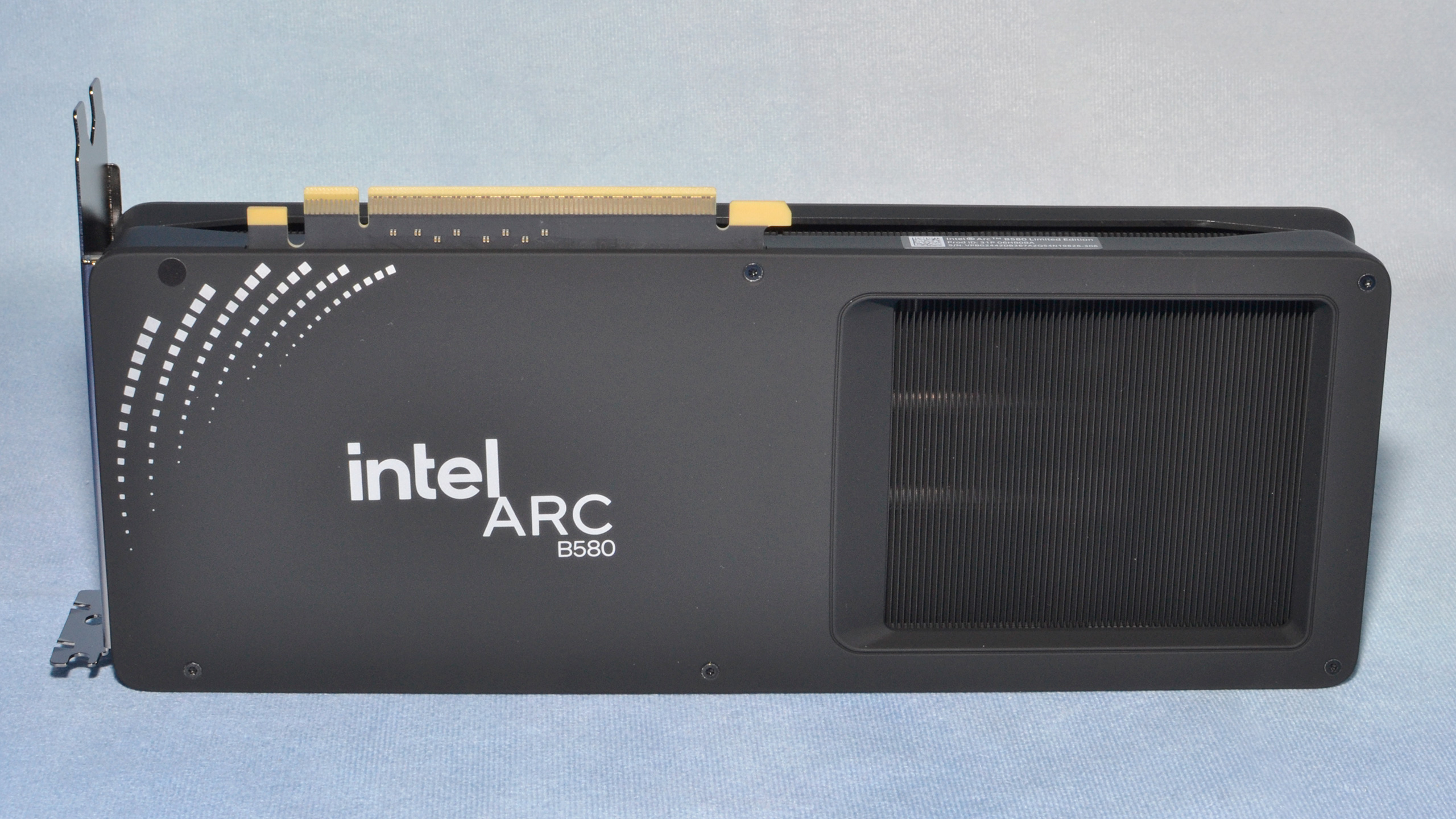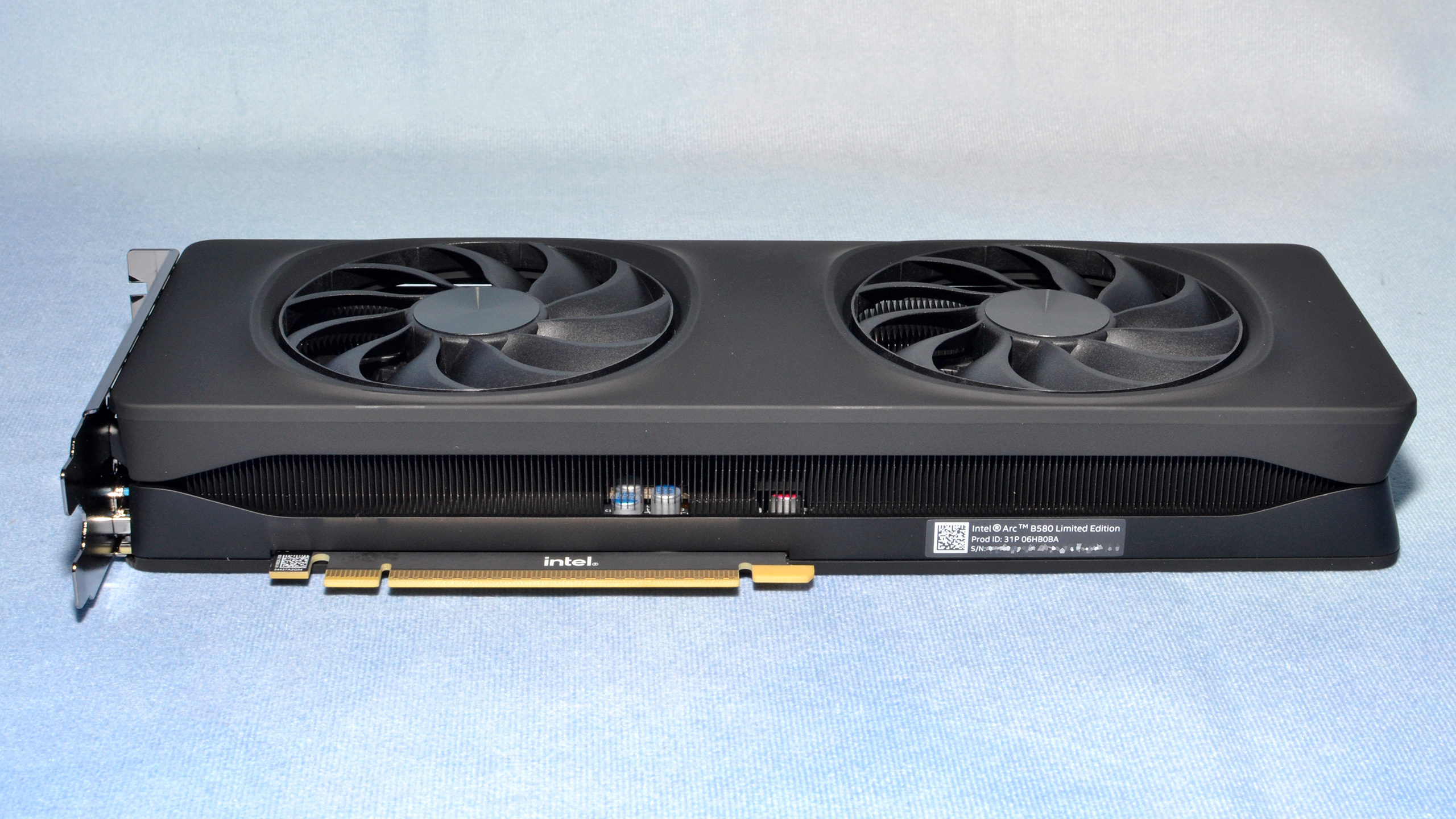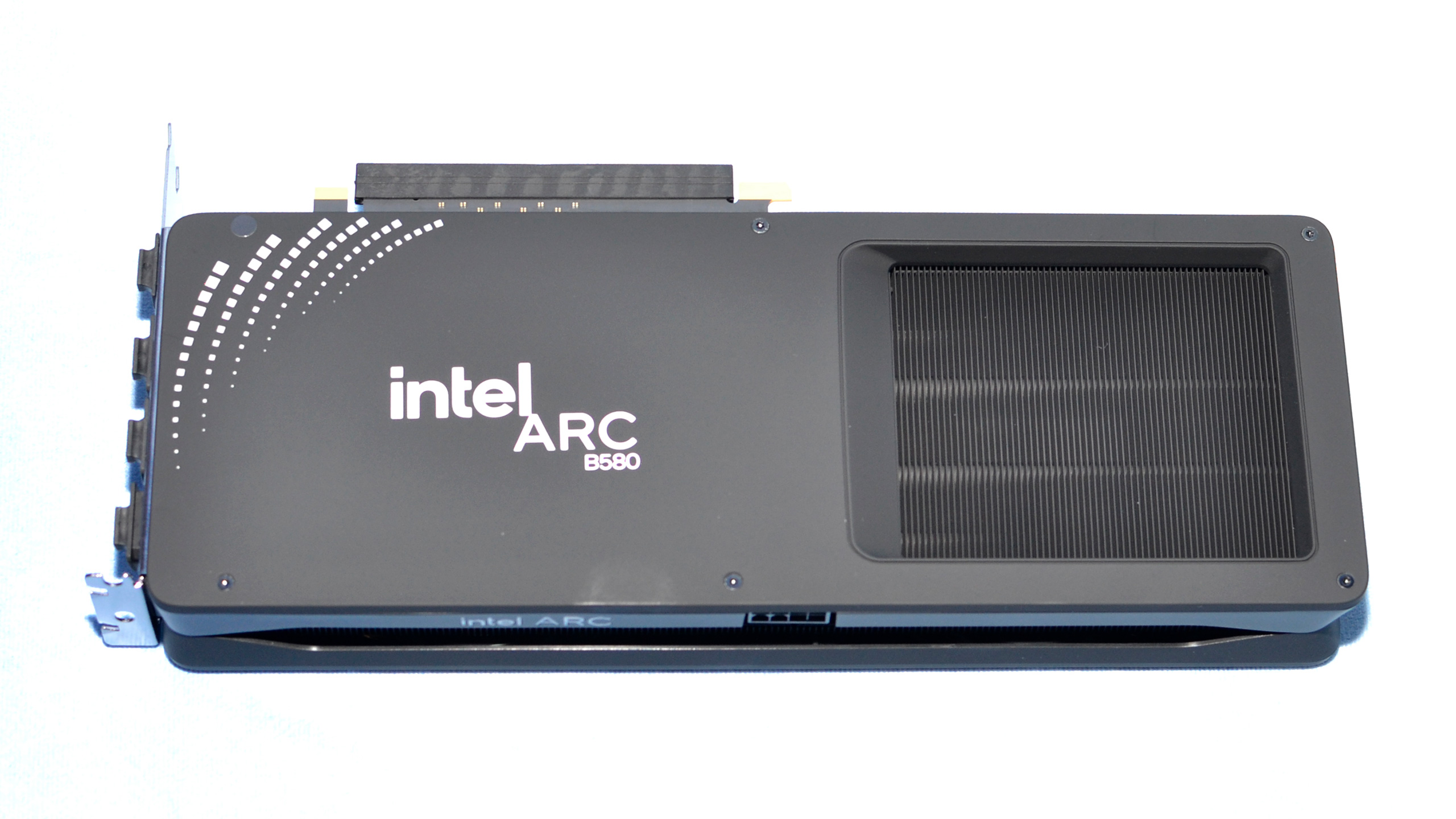Why you can trust Tom's Hardware
We have to give Intel credit: Entering the dedicated GPU market was always going to be difficult. Intel tried to do it back in the late 90s and then gave up. Things would have been very different if it had stuck with it and poured more funding into GPU R&D, but that ship sailed a long time ago. Now it's back for round three with Battlemage.
The Arc Alchemist GPUs were generally okay, but driver problems were and still are a potential concern. The A-series GPUs also failed to gain any market share, and some people assumed that Intel would simply give up on the discrete graphics card market yet again. So far, that hasn't happened, and the B580 and Battlemage are proof that Intel remains committed to becoming competitive in the GPU arena.
Intel needs to gain some traction with Battlemage if it's going to continue, though. With Gelsinger leaving Intel, a new CEO could spell changes for the GPU efforts. The next generation Celestial architecture is apparently already underway, and if that continues, we should see Arc C-series GPUs in the next year or two — probably first as an integrated solution on a future processor, just like Battlemage.
The driver situation has improved, even if things haven't gone perfectly with our testing for this launch. That's not unusual, and some of the necessary fixes were already present in the public driver branch. With the latest preview drivers, there weren't any significant show-stoppers in our testing.
The good news is that Battlemage looks more promising than its predecessor. It delivers better performance, improved efficiency, and some new features like XeSS 2 — though that will also work on A-series GPUs and will take time to materialize. The B580 also looks competitive as an AI solution, which is perhaps one of the biggest drivers of Intel's GPU efforts right now. Will consumers actually buy Arc B-series cards? That remains to be seen.
The biggest concern is that Battlemage, like Alchemist, is late to the party. Nvidia and AMD began shipping 5nm-class GPUs in 2022, right around the same time that Alchemist came out using a 7nm-class process node. Now, Intel has 'caught up' by shifting to TSMC N5, just in time for AMD and Nvidia to come out with their next generation chips.
Right now, you can make the argument that the Arc B580 represents the best graphics card value on the market. It has performance that's equal to or better than the existing AMD and Nvidia $250–$300 parts, with a competitive feature set, and it costs less. That's all good.
Will it still be the best value in another month or two? That largely hinges on whether AMD wants to be aggressive on pricing with its own budget GPU. The RX 7600 was more of a sidestep from the RX 6650 XT. Perhaps RX 8600 (or whatever it ends up being called) will offer a significant improvement in performance at the same price point.
Either way, it can't hurt to wait a few weeks until we find out more about AMD's RDNA 4 lineup. So unless you're on a strict timeline, like having a shiny new GPU for the holiday break, we'd wait and see what Nvidia and AMD announce in January before committing to any specific GPU purchase.
- MORE: Best Graphics Cards
- MORE: GPU Benchmarks and Hierarchy
- MORE: All Graphics Content
Get Tom's Hardware's best news and in-depth reviews, straight to your inbox.
Current page: Intel Arc B580: A nice generational improvement
Prev Page Intel Arc B580: Power, Clocks, Temps, and Noise
Jarred Walton is a senior editor at Tom's Hardware focusing on everything GPU. He has been working as a tech journalist since 2004, writing for AnandTech, Maximum PC, and PC Gamer. From the first S3 Virge '3D decelerators' to today's GPUs, Jarred keeps up with all the latest graphics trends and is the one to ask about game performance.
-
Math Geek nicely done :)Reply
looks like a good value. i'm in the market for my next card but seems like waiting a little bit to see what AMD does next is not too bad of an idea. i hate waiting to see what the next best thing is but this close it seems like prudent advice.
side note: it does look like you forgot to replace the place holders on the power consumption paragraph.
"On average, the B580 used xxxW at 1080p medium, xxxW at 1080p ultra, xxxW at 1440p, and xxxW at 4K. As you'd expect, power use typically increases at higher settings and resolutions." -
Jagar123 I am happy to have competition in the market. I imagine next gen AMD and Nvidia cards will be stronger competitors but they might be priced poorly again. Price to performance is key here. We'll see in a month or so.Reply -
shady28 Great review, against relevant parts for this price class too :DReply
Given that Steam shows the 3 most popular GPUs are the 3060 discrete, 4060 laptop, and 4060 discrete, Intel now has a GPU that competes in the largest part of the segment - and leads it in both value and performance.
Granted AMD and Nvidia are about to release new GPUs, but let's also note that the 5060 / 8600 aren't likely to show up until late 2025 or early 2026 if they follow their normal pattern. -
palladin9479 Great review, I'm in the market for a SFF two slot low power card for a living room system. The APU can only do so much and I'm starting to hit walls with it lately so a lower power dGPU might be the only real answer.Reply -
Gururu I guess it will come down to an availability issue. I doubt we will see superior cards by AMD or nVidia in this price bracket by end of Q1 2025. We will certainly see lots of benchmarks blowing these early battlemage offerings in January, but nothing ready for purchase. Later battlemage offerings are in my best guess going to be in the $400 range, likely beating 7800 and 4070, but again probably not until mid-late Q1. If AMD and nVidia drop anything crushing a 4090 you can bet it will be in the $700+ range. Is it fair to say that something beating the B580 readily available in April for $250 is fair competition now? I don't know. Maybe not if a normal consumer can actually get B580 silicon before Christmas.Reply -
Eximo Reply
I would probably still lean towards an RTX 3050 6GB for that. B580 is still a little power hungry for the job.palladin9479 said:Great review, I'm in the market for a SFF two slot low power card for a living room system. The APU can only do so much and I'm starting to hit walls with it lately so a lower power dGPU might be the only real answer.
I use an A380, and that isn't ideal either, since it still needs an 8-pin (at least that model). Though supposedly still only a 75W GPU. -
DS426 Great review, Jarred! The elaboration on your thinking and updating of your test bench's hardware and software is appreciated.Reply
It'll be some time before AMD and NVIDIA (green wants it written this way, by the way: http://http.download.nvidia.com/image_kit/LG_NVCorpBadge.pdf ... was curious as I noticed they have it written that way on their website) have new budget GPU's in this price class, so I myself wouldn't really recommend that a prospective owner waits. Of course, a lot of it also depends on if building new or upgrading (and upgrading from what). There's a huge user base at this price point, so I do imagine that Intel will get some market penetration for end users, not just prebuilds. This, particularly since day 1 drivers are already fairly stable overall and Intel now has the value leader at this price point; Intel didn't mess up this launch, whereas botched launches can tarnish audience sentiment of the product for months and years, if not permanently. -
King_V Definitely liking what I see here. And, glad to know that Intel is taking this very seriously. They're clearly not messing around.Reply -
rluker5 Transistor density pretty close to AMD.Reply
Transistor density of 7600XT is 65.2 M/mm2 and B580 is 72.1 M/mm2 per Techpowerup. Sure B580 is on 5nm while 7600XT is on 6nm but that isn't that big a difference. Definitely moving in the right direction. And more importantly performance per mm2 is much closer to AMD. And performance per watt.
Catching up really fast. -
caseym54 Probably flogging a dead horse here, but a 6-column table with 5 columns visible and a slider is truly lame.Reply


